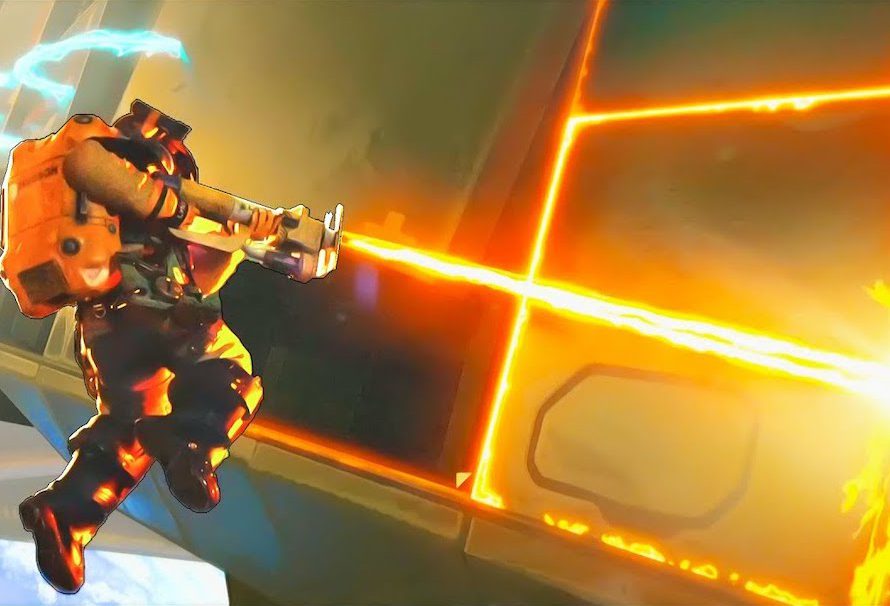You’ve decided to embark on a career of ship salvaging by joining the galaxies-leading salvage corporation. But you don’t know your spanners from your sprocket wrench. In Hardspace: Shipbreaker you’re going to need to learn how to manoeuvre through zero g environments, maintain, upgrade and repair tools. As well as, understanding the risks involved in dismantling ships full of potentially hazardous items all whilst navigating a zero g environment with next generation physics simulation. Don’t worry, we’ve got you covered with some tips on getting your career started.
What is Hardspace: Shipbreaker?

Released in early access in mid June, Hardspace: Shipbreaker is a game all about dismantling spaceships floating around in the endless void of space. You’ll be purchasing salvaging rights to be able to get into the belly of these ships, take them apart and sell anything worth a dime. Equipped with the best LYNX tech, slice and dice all the valuable items from within the ships. You’re going to have to work pretty hard to pay off your debts to LYNX corp as right from the off your debt amounts to 999,999,999 Credits… Better get to work.
Plan Your Work

You’re going to need to learn the best methods for how to salvage in Hardscape Shipbreaker. One thing that will help you is planning your work. Don’t just start using your Cutter with reckless abandon otherwise you could end up ruining some precious salvage.
Your high powered Cutter Tool will be your main item for breaking up ships. The Stinger head mount will mainly be used for making precision cuts and is useful for melting structural points. Whilst the Split Sawhead mount is used for making wide sweeping cuts and breaking down large objects into more manageable chunks.
Be careful whilst you work though, as your Cutter Tool could easily ignite hazardous materials within structures and therefore damaging salvageable items. Make sure you know what you’re cutting! You might go through some trial and error whilst you learn, but it won’t be long before you’ve mastered the ways of Hardspace: Shipbreaker and how to salvage.
Zero G Life

Working in Zero G conditions can be a little daunting so it’s good to get acclimated to the tools that will help you get around the ships whilst carrying out your contracts.
You have access to a Grapple Tool, this is the perfect equipment for moving heavy objects out of your way or, should you need, pulling them closer to you. Your gloves are also fitted with magnets. These magnets are perfect for helping you grab onto objects or walls and will help stabilize yourself in this weightless environment. The magnetic gloves are also useful for cushioning your impact with any objects.
Upgrading your tools is something that will prove invaluable to securing higher profits. The Grapple Tool can be upgraded with a Tethering function that allows you to link two objects together and moving multiple things at once. Use them wisely however, as Tethers aren’t free! Objects in Hardspace: Shipbreaker all act with next generation physics and will cause damage to other objects they collide with and can in some cases cause death if you get hit too hard.
Maintaining your Tools

Life as a salvager can take its toll on not only yourself, but also your equipment. WIth all these contracts you’re completing you’ll need to learn in Hardspace: Shipbreaker how to repair tools.
You can access the shop terminal and here you will be able to purchase repair kits amongst other things. Additionally, whilst working make sure to keep an eye out for useful consumables hiding within the ships. Fuel canisters, oxygen tanks and repair kits can all be found tucked away. Whilst fuel canisters and oxygen tanks are instantly consumed upon pick up, the repair kits will be added to your supply for use when they’re more needed.
Atmosphere and Elements

Space is a harsh and dangerous place and that’s no different in Hardspace: Shipbreaker. Learning how to handle and, in some cases, make use of the elements will be an important part of your career.
The ships you’ll be working on will have a power cell or generator of some kind. Removing these will shut down many of the ship’s systems. Removing the power cell from its protective casing will also cause it to emit electricity. We don’t need to tell you that electricity is dangerous. However, be aware that this electricity could damage other objects on the ship. Handle the power with care.
There will be various pipes you’ll encounter on ships. Some will be fuel pipes, whilst others could be carrying coolant. If you can find a way to remove the fuel from sections of pipe by isolating pipes with the right valves then you can safely flush those pipes and remove them. Fuel can and will leak at times that fuel can easily be ignited either in a controlled way or uncontrolled. Try to avoid the latter.
Coolant pipes have the ability to create flash freezes. Used in the correct way they can help you quickly break through a wall with the risk of starting a fire. But, that also means things can go wrong. Like fuel pipes, coolant pipes can also be flushed out with the use of valves to make them safe for cutting.
Whilst there might be no atmosphere in space, some ships can still contain pressurised areas sealed off from the vacuumless space. Depressurisation events can be devastating to your work. Not only could this result in explosive chain reactions, you could also lose valuable items to the dark emptiness of space. Making use of an atmospheric regulator and warnings on your HUD will help you to avoid disaster.

